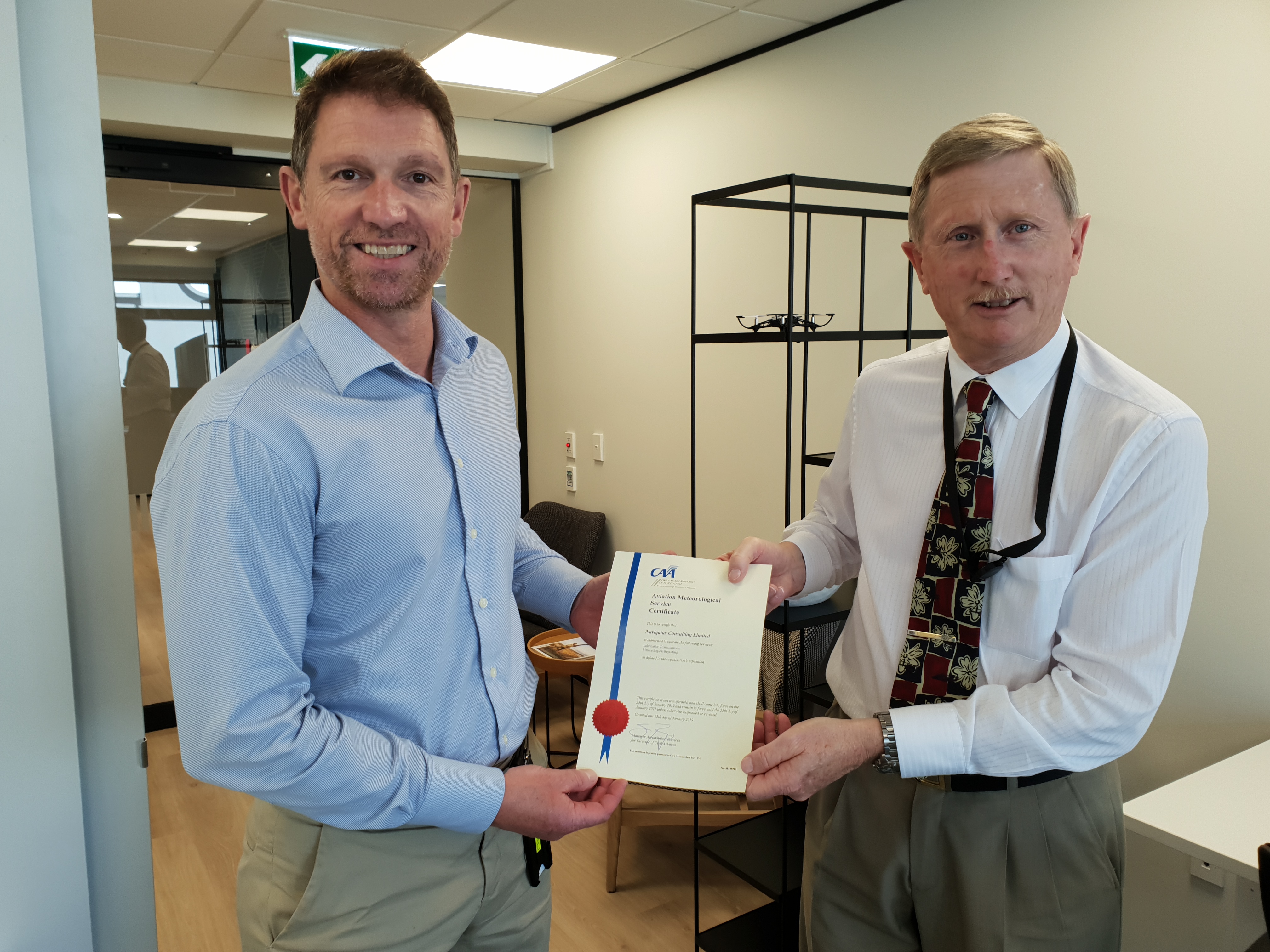
Navigatus is proud to have gained Part 174 Certification under the NZ CAA aviation rules system.
Peter Lechner – the CAA’s Chief Meteorological Officer (who is also Chairman of ICAO’s Meteorology Panel) is seen here presenting the certificate to Navigatus’ SMS Senior Person, Stephen Hunt, in the company’s Wellington office.
The company’s Part 174 Senior Person, Geraint Bermingham, remarks that this award represents the culmination of developments undertaken by Navigatus spanning nearly three years and now offers civil jet aircraft crews unprecedented insights into the complex wind regime within the Wakatipu Basin as they plan and execute their approach to Queenstown Airport. Queenstown approaches are recognised as unusually complex, requiring purpose equiped aircraft, advanced RNP-AR pilot training and that the crews are often presented with very challenging weather conditions during approaches including on late finals.
Geraint says that Navigatus really appreciates the assistance and support of a number of stakeholders. He notes in particular the assistance of Simon Martin of SITA.aero’s London office who lead the technical provisioning of the ACARS functionality, Captain Graham Cheal of Air New Zealand for his commitment to the analysis of the wind patterns and advice on the pilot’s perspective and Captain Nick Findley of Jetstar for championing the value of the system across the Tasman. One other who must be recognised is Captain Ross Dennerstein of Jetstar who flew approaches many many times as part of calibrating the system and refining the ACARS format. Sadly Ross is no longer with us and so cannot be thanked in person.
The Navigatus system incorporates numerous innovations and applies leading edge analysis to present a nuanced near-real time weather picture to aid flight planning, pre-flight pilot briefing and crew pre-approach preparations.
The system concept is applicable to any aerodromes where local factors and terrain effect weather patterns create potentially challenging conditions. This is as it gives advanced real time indications of conditions that will be encountered at the threshold and on the runway. This capability would also be particularly valuable at any uncontrolled aerodrome.
For further information on weather system service development, please contact Geraint.

Comments
No comments yet.